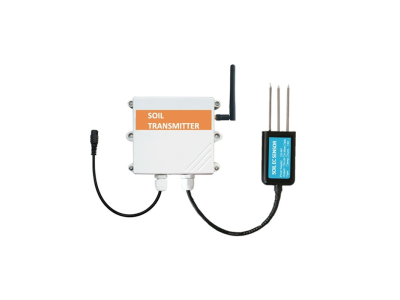As the global population continues to grow, sustainable farming practices have become a critical necessity. Maximizing crop yield while minimizing resource depletion and environmental impact is paramount. In this context, soil sensors have emerged as powerful tools that enable farmers to make data-driven decisions and optimize agricultural practices. This article explores the potential of soil sensors in revolutionizing farming techniques towards sustainability.
Understanding Soil Health:
Soil health is a fundamental aspect of sustainable agriculture. It directly affects crop productivity, nutrient availability, water retention, and ecosystem resilience. Soil sensors provide valuable insights into soil composition, moisture content, pH levels, temperature, and nutrient concentrations. By understanding soil health through sensor data, farmers can implement targeted interventions to enhance soil fertility, mitigate erosion, and promote healthier plant growth.

Real-Time Monitoring:
Traditionally, farmers have relied on manual soil sampling and laboratory analysis for soil testing. However, this approach is labor-intensive, time-consuming, and lacks real-time data. Soil sensors overcome these limitations by continuously monitoring soil conditions. Farmers can access real-time data on their smartphones or computers, providing instant insights into soil moisture levels, nutrient deficiencies, and other crucial parameters. This real-time monitoring allows for timely and precise decision-making.
Optimal Irrigation Management:
Water scarcity is a significant concern in agriculture. Improper irrigation practices can lead to water wastage, reduced crop yield, and environmental degradation. Soil moisture sensors embedded in the field provide accurate data on water content at different depths. This information helps farmers determine optimal irrigation schedules, conserve water resources, and prevent over or under-watering. By ensuring efficient water usage, soil sensors contribute to sustainable water management in agriculture.
Nutrient Management:
Balanced nutrient management is vital for healthy plant growth and sustainable farming. Soil sensors measure nutrient levels, including nitrogen, phosphorus, potassium, and micronutrients. This data allows farmers to precisely gauge nutrient deficiencies or excesses, enabling targeted fertilization. By optimizing nutrient application, farmers can minimize nutrient runoff, reducing the risk of water pollution and promoting sustainable soil fertility management.
Disease and Pest Management:
Early detection and prevention of diseases and pests are crucial for sustainable farming and crop protection. Soil sensors can detect indicators of plant diseases, such as changes in soil moisture, temperature, and electrical conductivity. By continuously monitoring these parameters, farmers can identify disease-prone areas, implement preventive measures, and minimize the use of chemical pesticides. This proactive approach reduces environmental contamination and promotes ecological balance.
Precision Farming:
Soil sensors play a vital role in precision farming, facilitating site-specific agriculture practices. By mapping soil variations within a field, farmers can tailor their planting, fertilization, and irrigation strategies accordingly. This precision approach optimizes resource utilization, minimizes environmental impact, and maximizes crop yield. Soil sensors integrated with GPS technology enable precise mapping, allowing farmers to precisely target inputs to specific areas, thus reducing waste and increasing overall efficiency.
Climate Change Adaptation:
Climate change poses significant challenges to agriculture, including altered rainfall patterns and increased frequency of extreme weather events. Soil sensors provide real-time data on soil temperature, moisture, and other parameters that help farmers adapt to changing climatic conditions. By monitoring soil conditions, farmers can adjust watering regimes, select appropriate crop varieties, and implement suitable soil conservation measures. These adaptive practices contribute to long-term sustainability in the face of a changing climate.
Integration with Data Analytics and IoT:
The potential of soil sensors can be further harnessed through integration with data analytics and the Internet of Things (IoT). Sensor data combined with advanced analytics can offer predictive insights, enabling farmers to make informed decisions about crop selection, yield forecasts, and pest management. Additionally, IoT connectivity allows for remote monitoring and control of soil sensors, enabling farmers to manage multiple fields and make informed decisions from any location.
Conclusion:
Soil sensors hold immense potential in transforming traditional farming practices into sustainable and data-driven approaches. By providing real-time insights into soil health, moisture levels, nutrient content, and other critical parameters, soil sensors empower farmers to make informed decisions and optimize agricultural practices. The integration of soil sensors with precision farming techniques, climate change adaptation strategies, and advanced analytics drives the path towards sustainable agriculture. Utilizing the power of soil sensors, farmers can enhance resource efficiency, protect the environment, and ensure food security for the growing global population while fostering a more sustainable future.






